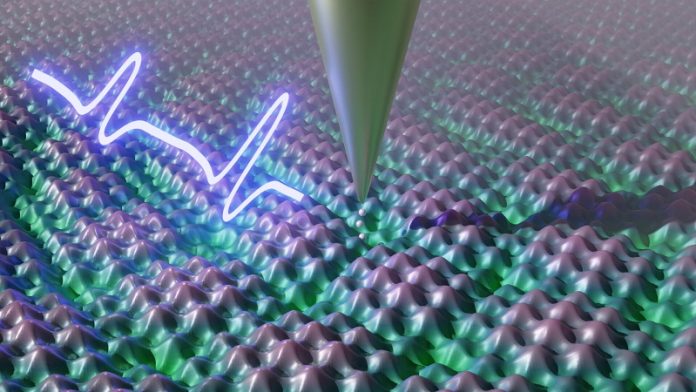
Physicists at the University of Stuttgart, led by Professor Sebastian Loth, have developed a groundbreaking quantum microscope that can record the movement of electrons at the atomic level with incredibly high spatial and temporal resolution.
This new method could significantly advance the way scientists develop materials. Their findings have been published in the journal Nature Physics.
“With our new method, we can see things that no one has ever seen before,” says Prof. Loth, the Managing Director of the Institute for Functional Matter and Quantum Technologies at the University of Stuttgart.
“This allows us to answer questions about electron movements in solids that have puzzled scientists since the 1980s.”
The practical implications of this research are substantial, particularly for creating new materials.
Tiny Changes, Big Effects
In basic materials like metals, insulators, and semiconductors, altering a few atoms doesn’t change their overall properties. For instance, metals remain conductive, and insulators do not conduct electricity.
However, in more advanced materials that can only be made in laboratories, even the tiniest atomic changes can lead to significant macroscopic changes. Some materials, for example, can suddenly switch from being insulators to superconductors, conducting electricity without losing heat.
These changes happen extremely quickly, in just picoseconds (one trillionth of a second). To put this in perspective, a picosecond is to a blink of an eye what a blink of an eye is to more than 3,000 years.
Capturing Electron Movements
Loth’s team has found a way to observe how these advanced materials behave when small changes occur at the atomic level. They studied a material made of niobium and selenium, focusing on the collective motion of electrons known as a charge density wave.
By applying a very short electrical pulse (lasting just one picosecond) to the material, the researchers could see how a single impurity affects the electron collective. This pulse causes nanometer-sized distortions in the electron collective, leading to highly complex electron movements for a brief period.
Important groundwork for this research was done at the Max Planck Institute for Solid State Research in Stuttgart and the Max Planck Institute for the Structure and Dynamics of Matter in Hamburg, where Loth previously conducted research before joining the University of Stuttgart.
“If we understand how the movement of the electron collective is stopped, we can develop materials with desired properties more effectively,” explains Loth. Essentially, since no materials are perfect and all have impurities, this new microscopy method helps scientists understand how these impurities should be arranged to achieve the desired technical effects. This knowledge could lead to ultra-fast switching materials for future sensors or electronic components.
“There are established methods for visualizing individual atoms or their movements,” says Loth. “But with these methods, you can either achieve a high spatial resolution or a high temporal resolution.”
The new Stuttgart microscope combines a scanning tunneling microscope, which can resolve materials at the atomic level, with an ultrafast spectroscopy method called pump-probe spectroscopy. This combination allows for both high spatial and temporal resolution.
To make these precise measurements, the laboratory setup must be extremely well shielded from vibrations, noise, and air movement, as well as temperature and humidity fluctuations. “We measure extremely weak signals that are easily lost in background noise,” Loth explains.
The team also needs to repeat their measurements frequently to obtain meaningful results. They optimized their microscope to repeat the experiment 41 million times per second, achieving a particularly high signal quality. “Only we have managed to do this so far,” says Loth.
In summary, this new quantum microscope from the University of Stuttgart provides an unprecedented view of electron movements at the atomic level, opening up new possibilities for material science and technology development.



